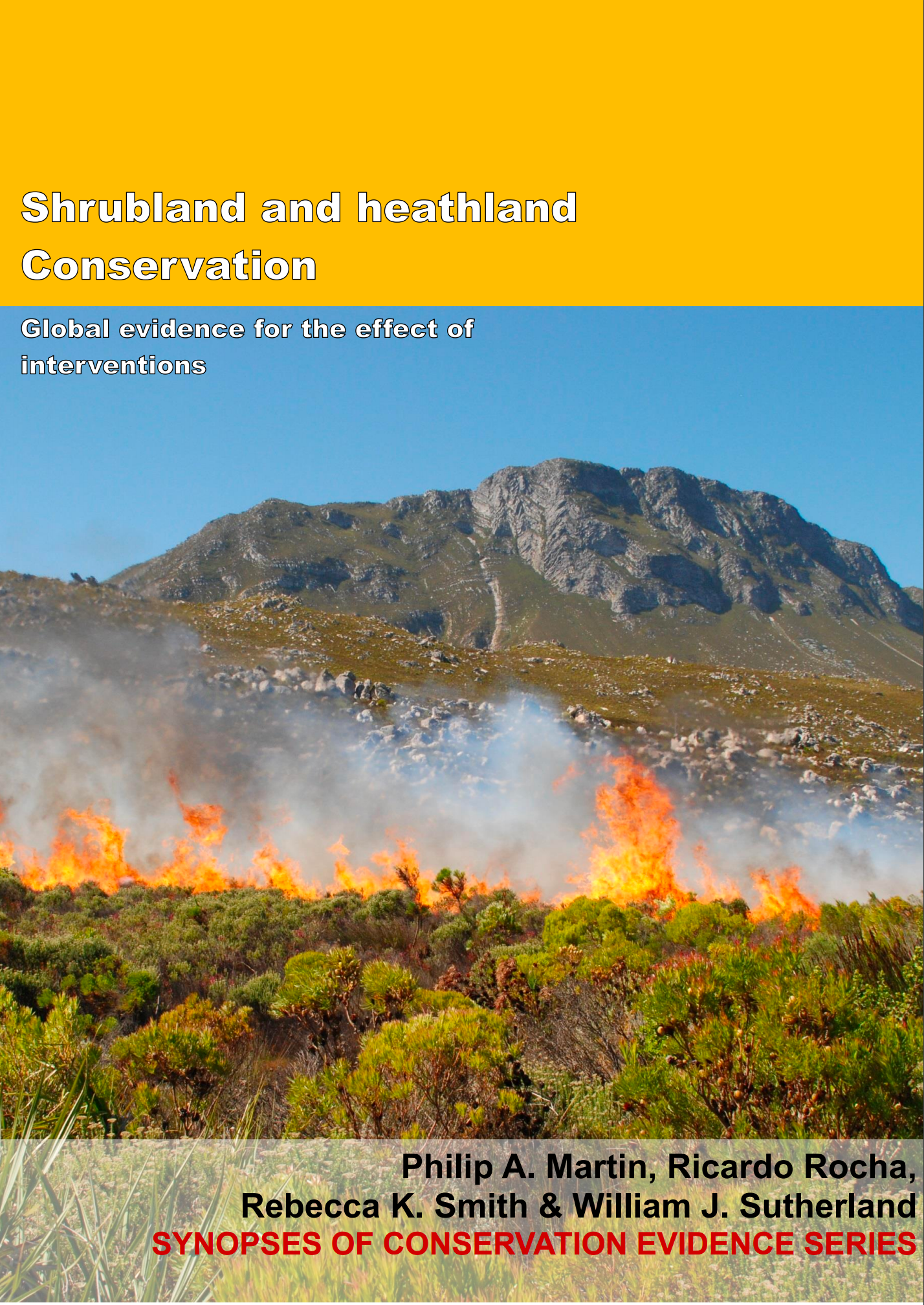Strip/disturb topsoil (alongside planting/seeding)
-
Overall effectiveness category Unknown effectiveness (limited evidence)
-
Number of studies: 3
View assessment score
Hide assessment score
How is the evidence assessed?
-
Effectiveness
60% -
Certainty
35% -
Harms
0%
Study locations
Supporting evidence from individual studies
A replicated, controlled study in 2001–2006 in ten improved grasslands in Dorset, UK (Diaz et al. 2007) found that stripping the surface layers of soil, followed by spreading of heather Calluna vulgaris clippings increased cover of heather and gorse Ulex europaeus, and decreased the cover of perennial rye-grass Lolium perenne. After five years, areas where the soil surface had been stripped and heather clippings spread had higher cover of both heather and gorse (heather: 6%; gorse: 21%) than areas where soil was not stripped and heather clippings were not spread (heather: 0%; gorse: 0%). Plots where the soil surface had been stripped and heather clippings spread also had lower cover of perennial rye-grass (1%) than areas where soil had not been stripped and heather clippings were not spread (24%). In April 2001 soil was stripped to a depth of 10 cm in ten 400 m2 plots after which heather clippings were spread over the plots. Soil was not stripped and heather clippings were not spread in ten 2500 m2 plots. In June 2006 plant cover was assessed using ten 4 m2 quadrats randomly located in each plot.
Study and other actions testedA controlled study in 1983-1989 in two grasslands in Dorset, UK (Smith et al. 1991) found that mowing followed by rotovating, and the spreading of clippings of heathland plants increased the number of heathland plant species in two of two cases, and increased the presence of heathland plant species in 3 of 16 comparisons, but increased the presence of non-heathland plant species for 2 of 22 comparisons after six years. In two of two cases areas that had been mowed, rotovated and spread with heathland clippings had a higher number of heathland plant species (4-7 species) than areas that had not been mowed, rotovated, and spread with clippings (1-5 species). Presence of heathland plant species was higher in areas that had been mowed, rotovated and spread with heathland clippings than in areas that had not been mowed, rotovated, and spread with clippings in 3 of 16 comparisons (cut: present in 1-16% of plots, uncut: present in 0% of plots). Presence of non-heathland plant species was higher in areas that had been mowed, rotovated and spread with heathland clippings than in areas that had not been mowed, rotovated, and spread with clippings in 1 of 22 comparisons (cut: present in 12% of plots, uncut: present in 4% of plots). In 1983 five 25 m2 plots were mowed and rotovated and subsequently spread with clippings harvested from a mature heathland and five plots were left unmowed and unrotovated, and were not spread with clippings. In 1989 four 1 m2 quadrats divided into twenty-five 20 x 20 cm squares were placed in each plot and the presence of plant species in each square recorded.
Study and other actions testedA randomized, replicated, paired, controlled study in 1993–2002 in three former grassland sites in the UK (Allison & Ausden 2004) found that removal of topsoil and addition of heathland clippings increased cover of heathland species, did not alter cover of annual grasses, but led to a decrease in perennial grass cover. After nine years, cover of heathland species was higher in areas where topsoil was removed and clippings were added (58%) than in areas where topsoil was not removed and clippings were not added (0%). Cover of annual grasses was not significantly different in areas where topsoil was removed and clippings added (2%) and areas where topsoil was not removed or clippings added (1%). However, the cover of perennial grasses was lower in areas where topsoil was removed and clippings were added (6%) than in areas where topsoil was not removed and clippings were not added (83%). Heathland clippings were collected from an intact heathland in September 1996. In 1993 topsoil was removed from twelve 3 x 3 m plots while in another twelve plots topsoil was not removed. Clippings were spread on the plots where topsoil was removed in November 1996. The cover of plant species in each plot was estimated in July and August 2002 using a point quadrat.
Study and other actions tested
Where has this evidence come from?
List of journals searched by synopsis
All the journals searched for all synopses
This Action forms part of the Action Synopsis:
Shrubland and Heathland Conservation
Shrubland and Heathland Conservation - Published 2017
Shrubland and Heathland synopsis





)_2023.JPG)














